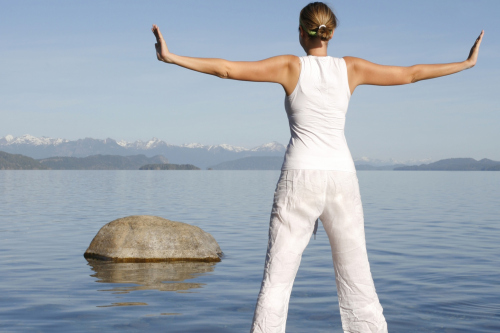Relaxation 101
Ready to rip out your hair? So stressed you can’t sleep? Tired of tense muscles? It’s time to relax.
Stress isn’t good for you. Mentally, stress causes anxiety, tension and hyper alertness. Prolonged, unmanaged stress leads to irritability, loss of concentration and a weakened immune system. Learning how to relax can counteract these stress responses. By releasing both physical and mental tension, relaxation restores your mind and body to a balanced state. Breathing exercises and progressive relaxation soothe the body. Guided imagery and visualization install peace of mind, especially combined with physical relaxation striking a balance is the key.
To learn how to relax, try these techniques from Shirley Archer, JD, MA, a Palo Alto, California, wellness educator and fitness specialist who is the author of the Pilates Deck, the Strength & Toning Deck and Pilates Fusion: Wellbeing for the Body, Mind and Spirit.
1. Conscious Breathing
Effective physical relaxation methods include simple breathing exercises, progressive relaxation and gentle, static stretching. If you don’t have much time, simply take a few moments to focus on your breathing. Mentally “observe” your inhalation and exhalation, without making an effort to control the breath. Pay attention to how the breath moves the body. Notice subtleties, such aswhether the chest or belly rises with inhalation, and how the body responds to exhalation. This singular focus brings you into the present moment and into the immediate experience of your body. It often results in slower, deeper diaphragmatic breaths that further relax the body.
2. Progressive Relaxation
After you are comfortable with conscious breathing, try progressive relaxation. It consists of sequentially tensing and relaxing individual muscles. This method helps you develop body awareness and educates you on how to release tension. When you do progressive relaxation, start from the top of the body and progress to the bottom, or vice versa. Proceeding sequentially gives you an easy-to-follow sense of order.
3. Visualization
Mental techniques can also be helpful. Visualization uses images that appeal to the senses – sight, sound, smell, touch and taste – to create mental and physical responses. Visualization involves mentally rehearsing a perfect performance or specific goal and includes all aspects of the experience, triggering sense and memory. Athletes use visualization to enhance sports performance. Thetechniques are effective because images are almost as real to the mind as actual experience. Regularly using visualization can create confidence, direct positive behavioural changer, strengthen motivation and engender feelings of control.
You may experience anxiety when trying a new relaxation technique. Know, too, that some methods can periodically bring strong emotions to the surface. You may cry or feel sad. Don’t worry. This type of release is normal and can represent an important “letting go”. If you have an extremely strong emotional reaction, you may want to consult with a counselor or other health care provider.
This handout is a service if IDEA, the leading international membership association in the health and fitness industry.
IDEA SOURCE HEALTH & FITNESS – APRIL 2004
Tags: stress relief